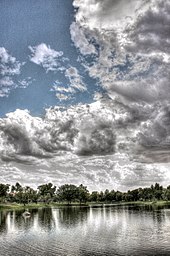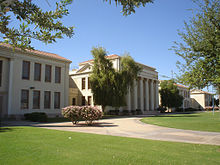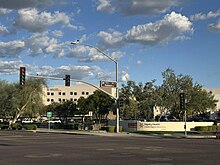

The Chandler medical board regulations play a crucial role in ensuring the safety and quality of healthcare services provided to the residents of Chandler. These regulations are designed to protect patients from potential harm and ensure that healthcare professionals adhere to high standards of practice.
The purpose of these regulations is to establish guidelines for medical practitioners, hospitals, and other healthcare facilities to follow in order to maintain a safe and effective healthcare system. They cover a wide range of areas including licensing requirements, patient confidentiality, infection control, and professional conduct.
The scope of the regulations is broad, encompassing all aspects of medical practice from diagnosis and treatment to record-keeping and billing practices. By setting clear expectations for healthcare providers, the regulations help to promote transparency and accountability in the industry.
Overall, the Chandler medical board regulations serve as a vital tool in safeguarding the health and well-being of the community. By upholding these standards, medical professionals can provide quality care that meets the needs of their patients while maintaining ethical practices.
In order to practice medicine in Chandler, medical professionals must adhere to a set of regulations enforced by the Chandler medical board. These requirements are put in place to ensure the safety and well-being of patients in the community.
Medical professionals practicing in Chandler must hold a valid license to practice medicine in the state of Arizona. This license demonstrates that they have met the necessary education and training requirements to provide quality care to patients. Additionally, medical professionals must undergo regular continuing education to stay up-to-date on the latest advancements in their field.
The Chandler medical board also requires medical professionals to maintain proper insurance coverage to protect both themselves and their patients in case of any unforeseen circumstances. This helps ensure that patients are not left financially responsible for any potential malpractice claims.
Furthermore, all medical professionals practicing in Chandler must adhere to strict ethical standards and abide by all laws and regulations pertaining to patient care. This includes maintaining patient confidentiality, obtaining informed consent, and providing appropriate treatment based on evidence-based practices.
By following these requirements set forth by the Chandler medical board, medical professionals can ensure that they are providing safe, effective, and ethical care to their patients. This ultimately leads to better outcomes for patients and a healthier community as a whole.

Understanding medical malpractice laws in Chandler is crucial for both healthcare professionals and patients alike.. These laws are in place to protect individuals from negligence or misconduct on the part of medical practitioners, ensuring that they receive the quality care they deserve. In Chandler, medical malpractice laws outline the responsibilities and obligations of healthcare providers, as well as the rights of patients who have been harmed by their actions.
Posted by on 2024-11-18

If you believe that you have been a victim of medical malpractice, it can be a confusing and overwhelming experience.. It is important to take certain steps to protect your rights and seek justice for any harm that may have been caused by negligent medical care. The first step you should take if you suspect medical malpractice is to gather all relevant documentation related to your medical treatment.
Posted by on 2024-11-18

Choosing the right medical malpractice lawyer in Chandler can be a daunting task, but it is crucial to ensure that you receive the best possible representation for your case.. With so many options available, it's important to take the time to research and find a lawyer who has the knowledge and experience needed to handle your specific situation. One of the first things to consider when selecting a medical malpractice lawyer is their experience in handling similar cases.
Posted by on 2024-11-18

Medical malpractice cases can take many forms, but there are several common types that we see in Chandler and throughout the healthcare system.. These cases often involve a breach of the standard of care that a healthcare provider is expected to provide to their patients. One common type of medical malpractice case is misdiagnosis or delayed diagnosis.
Posted by on 2024-11-18
The Chandler medical board regulations are put in place to ensure the safety and well-being of patients in our community. These regulations outline the standards that healthcare professionals must adhere to when providing care to individuals. Violations of these regulations can have serious consequences, and disciplinary actions may be taken against those found to be in breach.
Disciplinary actions for violations of the Chandler medical board regulations can vary depending on the severity of the offense. In some cases, a healthcare professional may receive a warning or reprimand for a minor infraction. However, more serious violations such as negligence, misconduct, or unethical behavior may result in more severe penalties.
These penalties can include fines, probation, suspension of license, or even revocation of license in extreme cases. The goal of these disciplinary actions is not only to hold individuals accountable for their actions but also to protect patients from harm and maintain the integrity of the healthcare profession.
It is important for all healthcare professionals to familiarize themselves with the Chandler medical board regulations and ensure they are following them at all times. By doing so, we can uphold the highest standards of care and continue to serve our community with integrity and professionalism.

If you ever feel like you've been mistreated or received inadequate care from a medical professional in Chandler, it's important to know that there are procedures in place for filing complaints. The Chandler medical board regulations have specific guidelines to follow when it comes to lodging grievances against healthcare providers.
First and foremost, it's crucial to gather all relevant information pertaining to the incident in question. This includes documenting dates, times, names of individuals involved, and any supporting documentation such as medical records or receipts. Once you have all the necessary details, you can proceed with filing a complaint.
The next step is to contact the appropriate regulatory body in Chandler that oversees medical professionals. This could be the Arizona Medical Board or another governing body depending on the nature of your complaint. You may be required to fill out a formal complaint form and provide all relevant information for review.
During the investigation process, it's important to cooperate fully with any requests for additional information or documentation. The regulatory body will conduct an impartial review of your complaint and determine if any disciplinary action is warranted against the medical professional in question.
Ultimately, filing a complaint against a medical professional is an important step in ensuring accountability and maintaining high standards of care within the healthcare industry. By following the established procedures outlined by the Chandler medical board regulations, you can help protect yourself and others from potential harm caused by negligent or unethical practices.
Compliance and enforcement measures are crucial components of the regulations set forth by the Chandler medical board. These measures ensure that healthcare providers adhere to the standards and guidelines put in place to protect the health and safety of patients.
The medical board implements various compliance measures to monitor and regulate healthcare practices. This includes conducting routine inspections, audits, and investigations to ensure that providers are following protocols and regulations. The board also reviews complaints from patients and other stakeholders to address any violations or concerns promptly.
Enforcement measures are put in place to hold healthcare providers accountable for any breaches of regulations. This may include issuing warnings, fines, suspensions, or revocations of licenses depending on the severity of the violation. By enforcing these measures, the medical board aims to maintain a high standard of care and protect patients from harm.
Overall, compliance and enforcement measures play a critical role in upholding the integrity of healthcare practices in Chandler. By ensuring that providers follow regulations and holding them accountable for any misconduct, the medical board can safeguard the well-being of patients and maintain trust in the healthcare system.
The Chandler medical board regulations are constantly evolving to ensure the safety and well-being of patients. Updates and revisions to these regulations are crucial in keeping up with advancements in the medical field and addressing any emerging issues.
By regularly reviewing and updating the regulations, the medical board can better protect patients from potential harm or negligence. These changes may involve new guidelines for healthcare providers, updated protocols for patient care, or revisions to existing policies to improve overall quality of care.
It is important for healthcare professionals in Chandler to stay informed about these updates and revisions to ensure compliance with the latest standards. By staying current with the regulations, medical practices can continue to provide high-quality care while maintaining accountability and transparency.
Overall, updates and revisions to the Chandler medical board regulations play a vital role in promoting patient safety and ensuring that healthcare providers uphold the highest standards of professionalism and ethics. It is a continuous process that reflects the commitment of the medical board to protect the health and well-being of all patients in Chandler.
Chandler, Arizona | |
|---|---|
City | |
 Aerial view of Chandler | |
 Location in Maricopa County, Arizona | |
| Coordinates: 33°18′N 111°50′W / 33.300°N 111.833°W | |
| Country | United States |
| State | |
| County | Maricopa |
| Founded | May 17, 1912 |
| Government | |
| • Type | Council-Manager |
| • Mayor | Kevin Hartke[1] |
| Area | |
| • City | 65.55 sq mi (169.77 km2) |
| • Land | 65.48 sq mi (169.58 km2) |
| • Water | 0.07 sq mi (0.18 km2) |
| Elevation | 1,211 ft (370 m) |
| Population (2020)[2] | |
| • City | 275,987 |
| • Estimate (2022)[2] | 280,711 |
| • Rank | US: 78th |
| • Density | 4,226.4/sq mi (1,627.45/km2) |
| • Metro | 4,948,203 |
| • Demonym | Chandlerite |
| Time zone | UTC−7 (MST (no DST)) |
| ZIP Codes | 85224, 85225, 85226, 85286, 85248, 85249 |
| Area code | 480 |
| FIPS code | 04-12000 |
| GNIS feature ID | 2409433[3] |
| Website | www |
Chandler is a city in Maricopa County, Arizona, United States, and a suburb in the Phoenix-Mesa-Chandler Metropolitan Statistical Area. It is the fourth-most populous city in Arizona, after Mesa, Tempe, and Phoenix. Chandler is considered to be a part of the East Valley.
As of the 2020 census, the population of Chandler was 275,987,[2] up from 236,123 at the 2010 census.[4] Chandler is a commercial and tech hub for corporations like Intel, Northrop Grumman, Wells Fargo, PayPal and Boeing.
In 1891, Dr. Alexander John Chandler, a Canadian and the first veterinary surgeon in the Arizona Territory, settled on a ranch south of Mesa and studied irrigation engineering. By 1900, he had acquired 18,000 acres (73 km2) of land and began drawing up plans for a town-site on what was then known as the Chandler Ranch. The town-site office opened on May 16, 1912.
The original town-site was bounded by Galveston Street to the north, Frye Road to the south, Hartford Street to the west, and Hamilton Street to the east.[5] By 1913, a town center was established, featuring the Hotel San Marcos, which also had the first grass golf course in the state. Chandler High School was established in 1914. Chandler was officially incorporated on February 16, 1920, after 186 residents petitioned the Maricopa County Board of Supervisors to approve incorporation.[citation needed]
Most of Chandler's economy was sustained during the Great Depression (though the Depression was to blame for the cancellation of a second San Marcos hotel), but the cotton crash a few years later had a much deeper impact on the city's residents. A. J. Chandler lost his San Marcos hotel to creditors as a result.[6] Later, the founding of Williams Air Force Base in 1941 led to a small surge in population, but Chandler still only held 3,800 people by 1950.[citation needed]
By 1980, the population had grown to 30,000, and it has since paced the Phoenix metropolitan area's high rate of growth, with suburban residential areas and commercial use areas swallowing former agricultural plots. The population has nearly doubled in the last twenty years. Some of this growth was fueled by the establishment of manufacturing plants for communications and computing firms such as Microchip, Motorola and Intel.
According to the 2020 census, Chandler has a total area of 65.55 square miles (169.8 km2), of which 0.07 square miles (0.18 km2), or 0.11%, are listed as water.[2] The center of the city, along Arizona State Route 87, is 22 miles (35 km) southeast of Downtown Phoenix.
Chandler is in proximity to/borders the San-Tan mountain range. The San-Tan mountains are in the jurisdiction of the Gila River Indian Community.
Chandler is divided into three parts: North Chandler, West Chandler and South Chandler, each being divided by the Loop 202 (Santan Freeway) and Loop 101 (Price Freeway).
| Climate data for Chandler, AZ | |||||||||||||
|---|---|---|---|---|---|---|---|---|---|---|---|---|---|
| Month | Jan | Feb | Mar | Apr | May | Jun | Jul | Aug | Sep | Oct | Nov | Dec | Year |
| Record high °F (°C) | 89 (32) |
95 (35) |
99 (37) |
106 (41) |
118 (48) |
116 (47) |
119 (48) |
115 (46) |
113 (45) |
107 (42) |
97 (36) |
86 (30) |
119 (48) |
| Mean daily maximum °F (°C) | 67 (19) |
71 (22) |
77 (25) |
85 (29) |
94 (34) |
104 (40) |
106 (41) |
104 (40) |
99 (37) |
89 (32) |
75 (24) |
67 (19) |
87 (30) |
| Daily mean °F (°C) | 54 (12) |
58 (14) |
63 (17) |
70 (21) |
78 (26) |
87 (31) |
92 (33) |
90 (32) |
85 (29) |
74 (23) |
61 (16) |
54 (12) |
72 (22) |
| Mean daily minimum °F (°C) | 41 (5) |
45 (7) |
49 (9) |
54 (12) |
61 (16) |
70 (21) |
77 (25) |
76 (24) |
70 (21) |
59 (15) |
47 (8) |
40 (4) |
57 (14) |
| Record low °F (°C) | 15 (−9) |
19 (−7) |
24 (−4) |
30 (−1) |
37 (3) |
43 (6) |
54 (12) |
51 (11) |
40 (4) |
30 (−1) |
22 (−6) |
17 (−8) |
15 (−9) |
| Average precipitation inches (mm) | 1.01 (26) |
1.03 (26) |
1.19 (30) |
0.33 (8.4) |
0.17 (4.3) |
0.06 (1.5) |
0.89 (23) |
1.14 (29) |
0.89 (23) |
0.81 (21) |
0.77 (20) |
0.98 (25) |
9.20 (234) |
| Source: The Weather Channel[7] | |||||||||||||
| Census | Pop. | Note | %± |
|---|---|---|---|
| 1930 | 1,378 | — | |
| 1940 | 1,239 | −10.1% | |
| 1950 | 3,799 | 206.6% | |
| 1960 | 9,531 | 150.9% | |
| 1970 | 13,763 | 44.4% | |
| 1980 | 29,673 | 115.6% | |
| 1990 | 89,862 | 202.8% | |
| 2000 | 176,581 | 96.5% | |
| 2010 | 236,123 | 33.7% | |
| 2020 | 275,987 | 16.9% | |
| 2022 (est.) | 280,711 | [8] | 1.7% |
| U.S. Decennial Census[9] | |||
| Race / Ethnicity (NH = Non-Hispanic) | Pop 2000[10] | Pop 2010[11] | Pop 2020[12] | % 2000 | % 2010 | % 2020 |
|---|---|---|---|---|---|---|
| White alone (NH) | 121,168 | 145,724 | 147,119 | 68.62% | 61.72% | 53.31% |
| Black or African American alone (NH) | 5,821 | 10,580 | 15,564 | 3.30% | 4.48% | 5.64% |
| Native American or Alaska Native alone (NH) | 1,628 | 2,715 | 3,850 | 0.92% | 1.15% | 1.39% |
| Asian alone (NH) | 7,345 | 19,119 | 32,710 | 4.16% | 8.10% | 11.85% |
| Pacific Islander alone (NH) | 222 | 365 | 571 | 0.13% | 0.15% | 0.21% |
| Some Other Race alone (NH) | 301 | 369 | 1,237 | 0.17% | 0.16% | 0.45% |
| Mixed Race or Multi-Racial (NH) | 3,037 | 5,443 | 12,679 | 1.72% | 2.31% | 4.59% |
| Hispanic or Latino (any race) | 37,059 | 51,808 | 62,257 | 20.99% | 21.94% | 22.56% |
| Total | 176,581 | 236,123 | 275,987 | 100.00% | 100.00% | 100.00% |
As of the 2022[update] American Community Survey estimates, there were 280,684 people and 106,712 households.[13][14] The population density was 4,276.2 inhabitants per square mile (1,651.1/km2). There were 113,092 housing units at an average density of 1,722.9 per square mile (665.2/km2).[15][16][14] The racial makeup of the city was 56.0% White, 13.4% Asian, 7.6% Black or African American, 4.4% some other race, 1.0% Native American or Alaskan Native, and 0.1% Native Hawaiian or Other Pacific Islander, with 17.5% from two or more races.[14] Hispanics or Latinos of any race were 21.2% of the population.[14]
Of the 106,712 households, 34.4% had children under the age of 18 living with them, 24.2% had seniors 65 years or older living with them, 50.7% were married couples living together, 7.4% were couples cohabitating, 18.3% had a male householder with no partner present, and 23.6% had a female householder with no partner present.[13] The median household size was 2.61 and the median family size was 3.12.[13]
The age distribution was 23.8% under 18, 8.9% from 18 to 24, 27.9% from 25 to 44, 26.4% from 45 to 64, and 13.0% who were 65 or older. The median age was 37.0 years.[17] For every 100 females, there were 105.8 males.[14]
The median income for a household was $98,664, with family households having a median income of $116,362 and non-family households $66,304. The per capita income was $50,247.[18][19] Out of the 279,322 people with a determined poverty status, 7.6% were below the poverty line. Further, 9.3% of minors and 7.6% of seniors were below the poverty line.[20]
In the survey, residents self-identified with various ethnic ancestries. People of German descent made up 13.0% of the population of the city, followed by Irish at 10.1%, English at 8.5%, American at 5.7%, Italian at 4.5%, Polish at 1.9%, Scottish at 1.7%, French at 1.6%, Arab at 1.5%, Sub-Saharan African at 1.5%, Norwegian at 1.2%, Dutch at 1.1%, Swedish at 1.0%, French Canadian at 0.6%, Russian at 0.6%, Scotch-Irish at 0.5%, and Greek at 0.5%.[13]
Computer chip manufacturer Intel has two locations in Chandler. Other high-technology manufacturing firms have partnerships with Chandler,[21] their operations employing approximately 25% of non-government workers in 2007.[22]
Since 2003, more than 2,900 jobs and investments totalling $3 billion have been created along the Price and Santan freeways,[23] in the Price Road Corridor.[24] The 1,300,000-square-foot (120,000 m2) Chandler Fashion Center, opened in 2001.
Companies headquartered in Chandler include Keap, Microchip, and Rogers. Bashas' headquarters is in a county island surrounded by Chandler.
According to the City of Chandler Economic Development Division,[25] leading employers in the city are:
| # | Employer | # of Employees |
|---|---|---|
| 1 | Intel | 12,000 |
| 2 | Wells Fargo | 5,500 |
| 3 | Chandler Unified School District | 4,900 |
| 4 | Bank of America | 3,600 |
| 5 | Chandler Regional Medical Center / Dignity Health | 2,500 |
| 6 | Northrop Grumman | 2,150 |
| 7 | Chandler–Gilbert Community College | 1,900 |
| 8 | City of Chandler | 1,800 |
| 9 | Microchip Technology (HQ) | 1,700 |
| 10 | NXP Semiconductors | 1,700 |
| 11 | PayPal | 1,500 |
| 12 | Insight Enterprises | 1,400 |
| 13 | Microchip Technology | 1,500 |
| 14 | Verizon | 1,400 |
| 15 | Bashas' (HQ and Distribution Center) | 1,100 |

Chandler holds an annual Ostrich Festival at Tumbleweed Park[26] to commemorate when ostrich farms in the area produced plumes for women's hats during the 1910s.[citation needed]
Chandler also holds an annual ceremony to light a tree made from tumbleweeds; a ceremony founded in 1957 when Chandler sought an alternative way to decorate the city during the Christmas holidays.[27]
Venues, galleries and museums include:
Several sites in Chandler are listed on the National Register of Historic Places, including the McCullough–Price House and the San Marcos Hotel.[30]
The Chandler Public Library serves Chandler and the greater East Valley. The main library is in Downtown Chandler, with two branches elsewhere in the city: Sunset, Basha (shared with Basha High School), and Hamilton (shared with Hamilton High School).

Tumbleweed Park hosts the annual Ostrich Festival, the Fourth of July Fireworks Festival and the annual Day of Play. It features a recreational center with equipment suited for fitness.[31]
Hamilton Aquatic Center is a shared-use aquatic facility, located within Hamilton High School's campus.[32]
Nozomi Aquatic Center is a shared-use aquatic facility which includes a 25 yard, 8-lane competition pool.[33]
Veterans Oasis Park is located at the city's highest point, at 1,311 feet (400 m).[34] It includes a wildlife preservation and designated horse and walking trails.[35]
Chandler is represented by a mayor, a vice mayor and five city council members. The vice mayor is elected by the city council from among its members. The mayor, vice mayor and council members represent the entire city and are not elected from districts or wards.[36]
Kevin Hartke was elected to his second term as mayor in 2023.[36]

The north central section of the city and the western "leg" of the city are within Arizona's 4th congressional district, served by Representative Greg Stanton, a Democrat. The rest of Chandler is within Arizona's 5th congressional district, served by Representative Andy Biggs, a Republican.
Chandler's western "leg" and a small, narrow portion of the adjacent northern part of the city are within Arizona's 18th Legislative District, served by Representatives Denise Epstein and Jennifer Jermaine, and Senator Sean Bowie, all Democrats. The rest of the city is in Arizona's 17th Legislative District, served by Representatives Jennifer Pawlik and Jeff Weninger, and Senator J. D. Mesnard, one Democrat and two Republicans.

Chandler is served by the Chandler Unified School District, Kyrene Elementary School District, Tempe Union High School District, Mesa Public Schools, and Gilbert Public Schools.[citation needed]
Catholic and charter schools include Basis Schools, Seton Catholic Preparatory, and Legacy Traditional Schools.[37]
Post-secondary educational institutions located in Chandler include: The University of Arizona Chandler,[38] International Baptist College, and the two-year Chandler-Gilbert Community College, which serves 13,000 students.[37]
Chandler Municipal Airport is a two-runway general aviation facility. Stellar Airpark is a privately owned municipal airport open to the public.

Chandler is served by three limited access highways:
Chandler is served by two single-track branch lines of the Union Pacific Railroad.
Hospitals in Chandler include Chandler Regional Medical Center, and Banner Ocotillo Medical Center.[40][41]
Chandler has two sister cities:[42]